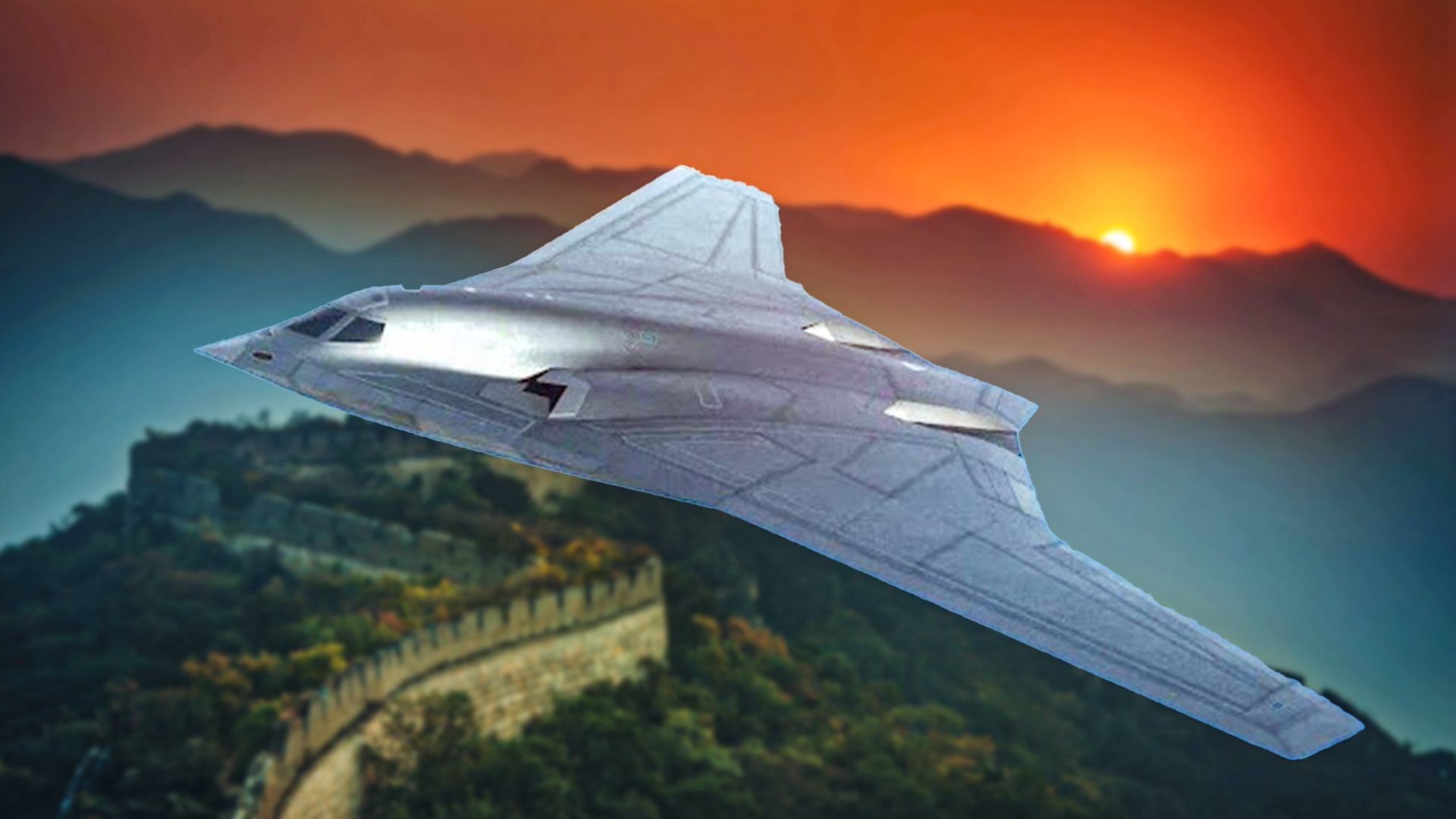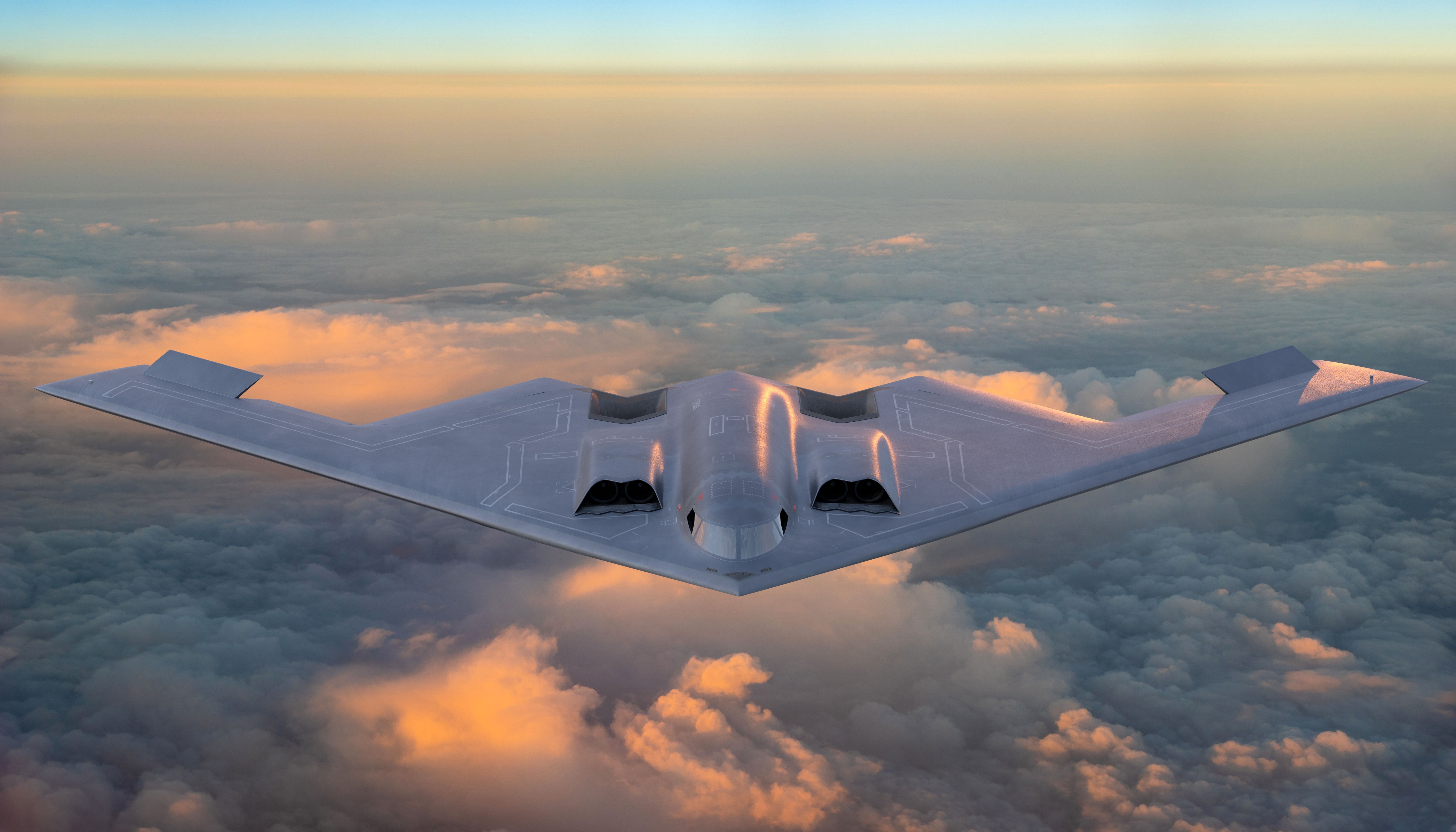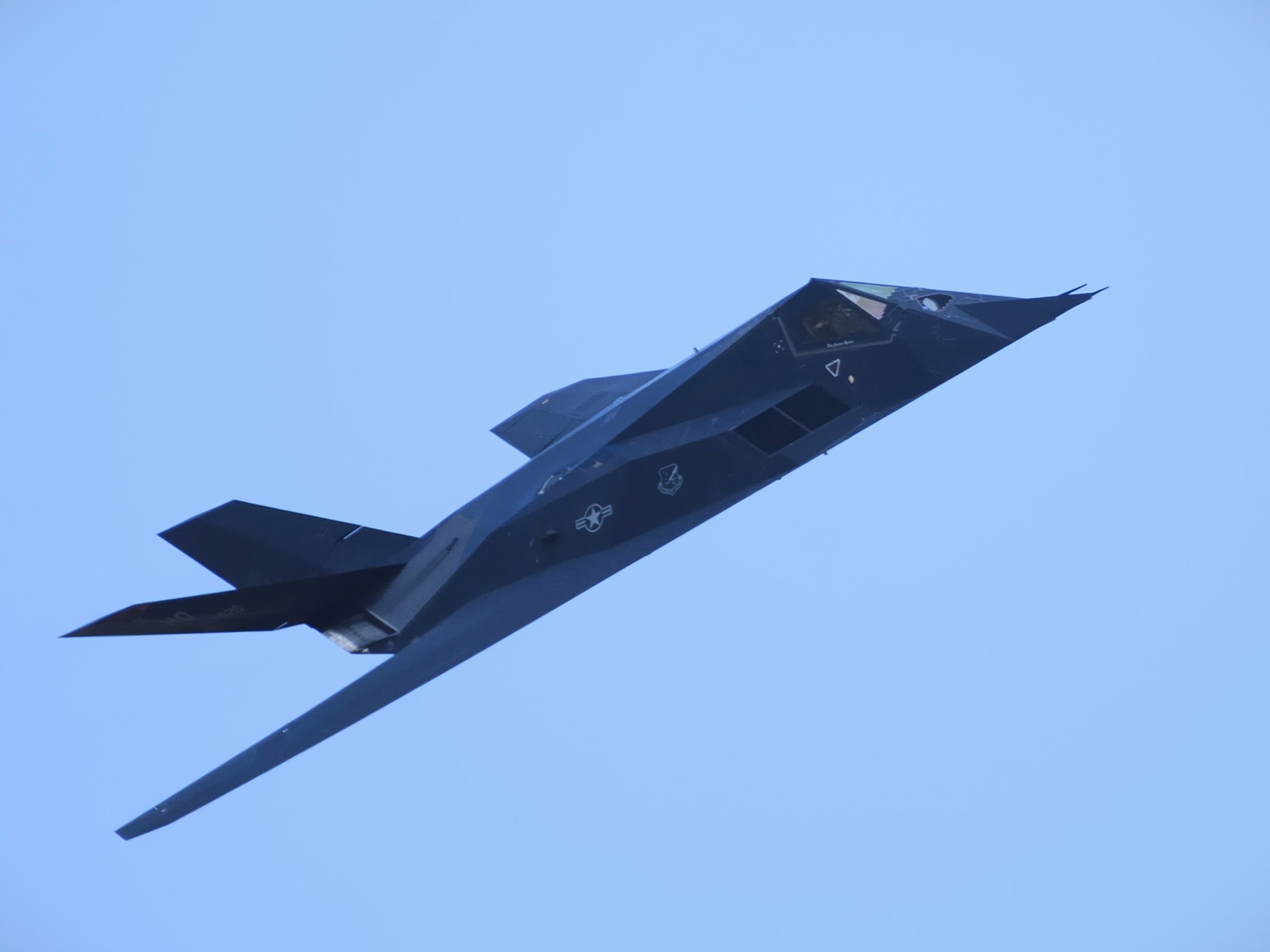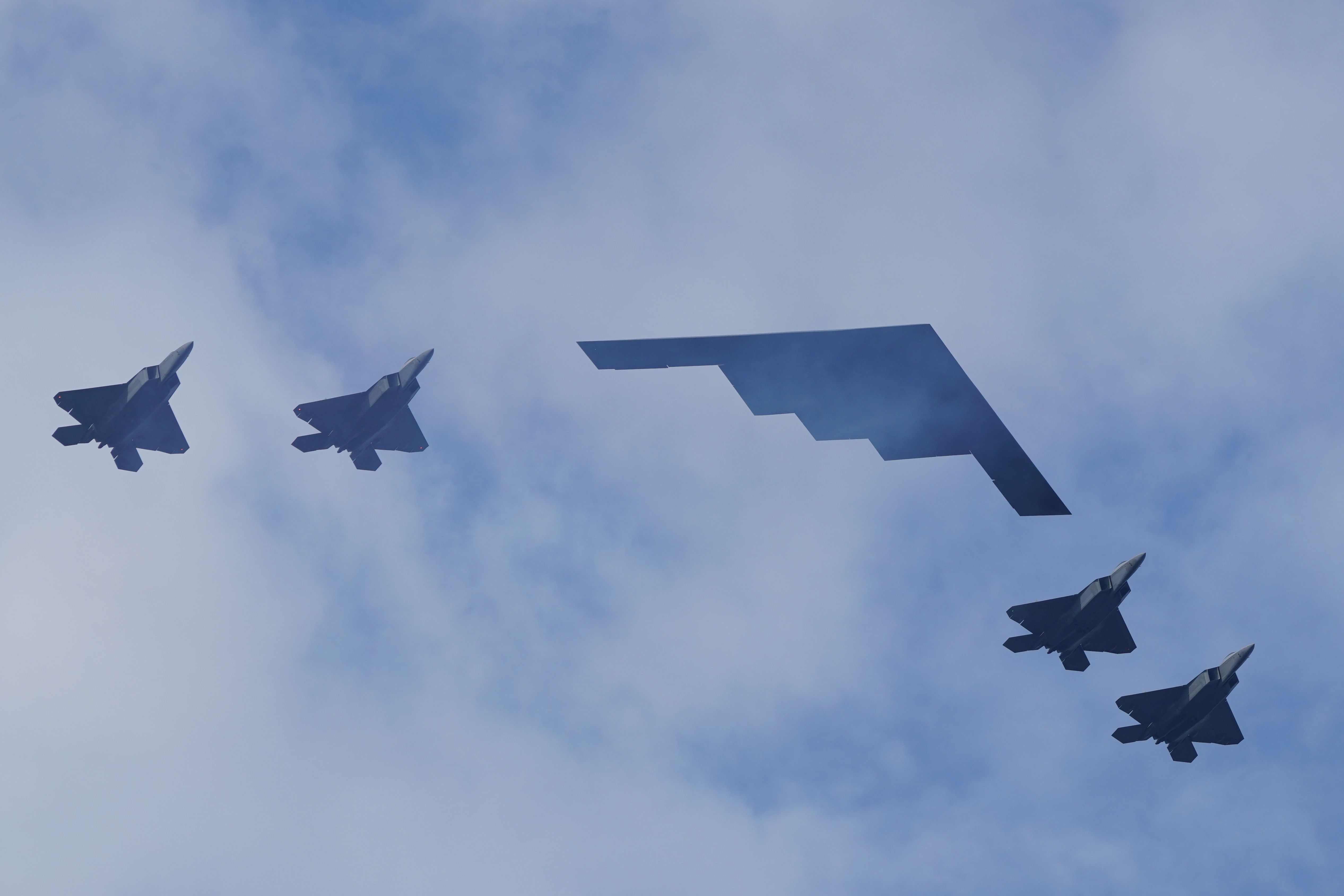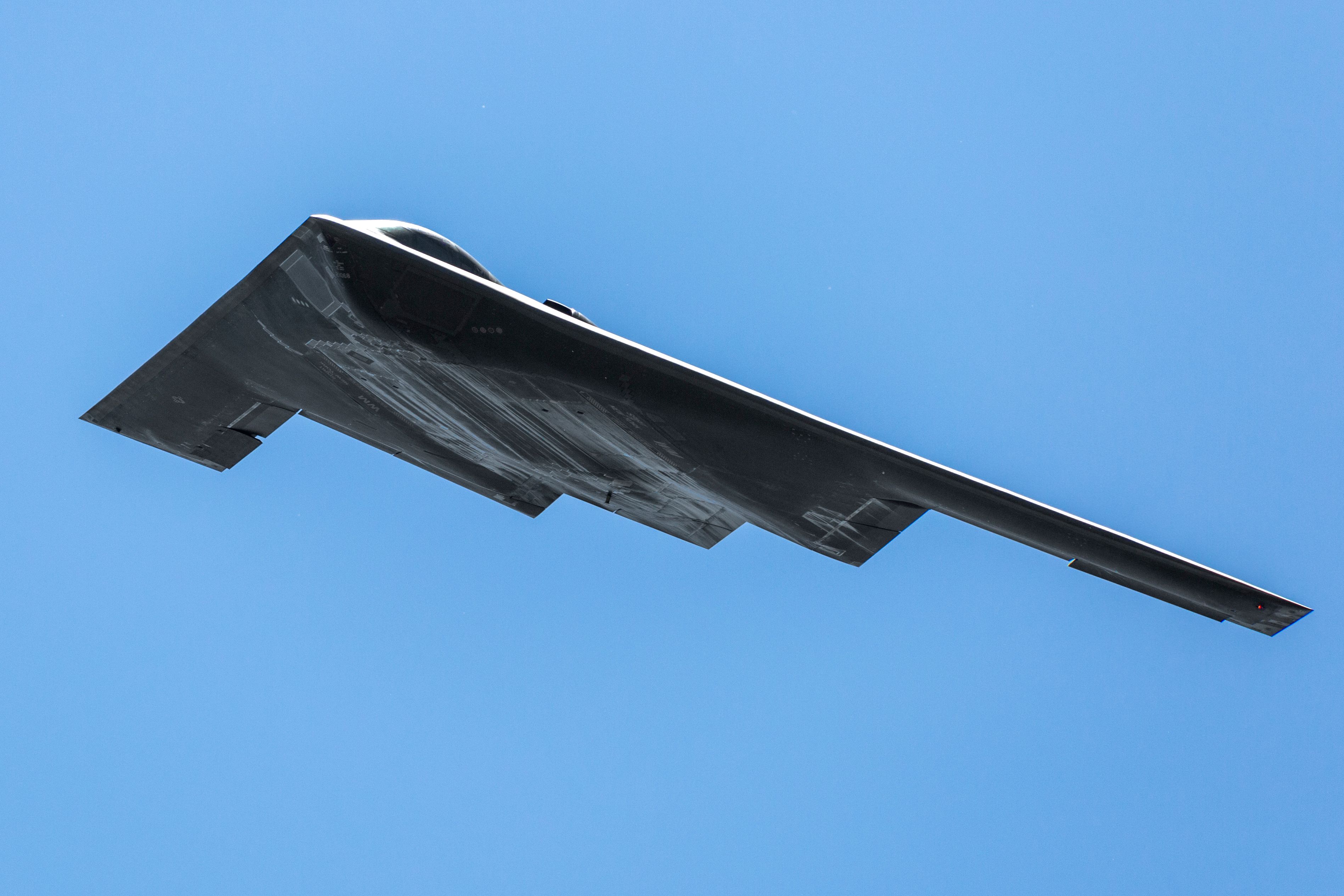Summary
- China’s Xi’an H-20 stealth bomber is set to challenge the US B-21 Raider for strategic advantage in air warfare.
- With a range of over 5,200 miles, the Xi’an H-20 could alter the nuclear balance.
- While the US remains confident in its stealth capabilities, officials do not want to underestimate China’s advancements in military technology.
Strategic bombing, involving medium- to long-range targets, began to appear among military organizations during World War II. Several types of aircraft have been developed over the years in the US and Russia specifically to specialize in dropping a significant amount of weaponry from the air. These planes differ from fighter bombers in that they do not operate in air-to-air attacks during combat; however, they can be used in tactical bombing missions. As several innovations have continued with aircraft development, strategic bombers have become even more feared with the introduction of stealth technology.
Stealth, which essentially is self-explanatory, has changed the military scene since its origins in the 1970s. The US Department of Defense worked on developing technology for aircraft that would reflect less radio, infrared, or light energy, making it more difficult for jets to be detected by electronic warning systems. The technology was introduced on fighter jets in the US, Russia, and China before being integrated into the development of strategic bombers. While China has a stealth fighter jet, the country is expected to unveil its first-ever stealth bomber: the Xi’an H-20.
5
In development for nearly a decade
According to Newsweek, US analysts have nicknamed the Xi’an as the “Storm” as it is to be a contender to the Northrop Grumman B-21 Raider – the US Air Force’s newest stealth bomber. The B-21 has been designed to be cost-efficient and have high functionality with modern technology, according to The National Interest. It is also expected to be a replacement for older bombers while continuing to maintain a strategic edge despite an ever-changing global threat landscape. In addition to the Xi’an H-20, Russia is also developing a stealth bomber.
Stealth bombers across the globe
|
Country |
Aircraft |
First Flight |
|---|---|---|
|
United States |
Northrop Grumman B-2 Spirit |
July 1989 |
|
Northrop Grumman B-21 Raider |
November 2023 |
|
|
Russia |
Tupolev PAK DA |
In development |
|
China |
Xi’an H-20 |
In development |
The Xi’an H-20 was announced by the People’s Liberation Army Air Force (PLAAF) commander Ma Xiaotian in 2016, according to The National Interest. Since then, the Air Force has not shared any additional details other than a video released by the state-owned Aviation Industry Corporation of China in 2018.
4
Flying wing design
Then, in 2021, the PLAAF released a video featuring the aircraft for recruitment. However, it was evident that the Air Force intended to keep details under wraps because a report from the Global Times shared that the aircraft was covered by a blanket in the videos.
“Both videos featured computer-generated scenes of an unknown large aircraft covered in a blanket, with the aircraft’s outline suggesting it boasts a flying wing design, but with no further elaboration.”
Other design elements
In addition to its flying wing design, similar to other stealth bombers, analysts believe the aircraft will be developed with the following:
- Adjustable tail wings
- Airborne radar
- Dark gray radar-absorbent material on the outer skin
Deputy Commander Wang Wei recently spoke to Chinese state-owned newspaper, the Hong Kong Commercial Daily, that the Xi’An unveiling would be “coming soon.”
3
Enhanced long-range striking
The Xi’an H-20 will likely have enhanced long-range striking capabilities, with an internal weapons bay, a payload of more than 40 tonnes, and a max takeoff weight of at least 200 tonnes. Additionally, it has been speculated that the aircraft will be able to fly at subsonic speeds and could be armed with up to four hypersonic stealth cruise missiles.
Photo: Mike Mareen | Shutterstock
“All problems can be solved”
According to The National Interest, photos of the upcoming aircraft were reportedly published in the latest edition of Modern Weaponry, a magazine developed by China North Industries Group (Norinco), a state defense corporation. Wei, who is also a member of the 14th National Committee of the Chinese People’s Political Consultative Conference (CPPCC) also said, “there is no bottleneck, and all problems can be solved. Our scientific researchers are progressing well, they are fully capable,” according to The National Interest.
2
Estimated range of over 5,200 miles
The Xi’an H-20’s range is also expected to be long, allowing it to threaten nearby countries and even the US.
A “bully” to neighbors
Brent Eastwood, a reporter for The National Interest, explained that the aircraft could be used for surprise attacks and could be capable of aerial refueling.
“The Xian H-20 could also bully China’s neighbors by reaching Japan, Guam, and the Philippines, not to mention pulling a surprise attack against Taiwan. It has an enviable range of around 5,281 miles if reports are accurate, and aerial refueling could make it to Hawaii – and even the West Coast of the United States. The H-20 could also have a weapons payload of 45 tons.”
Photo: LFink | Shutterstock
1
Altering the nuclear balance
With a range capable of reaching the West Coast, analysts believe the Xi’an H-20 could change the nuclear balance with the US.
“A heavy-payload, deep-penetration bomber would help China alter the nuclear balance with the United States. There is no current arms control agreement with the United States, and Beijing is always looking for a qualitative nuclear edge over Washington,” Eastwood noted.
Photo: Mariusz Lopusiewicz | Shutterstock
China has accomplished some accomplishments in manufacturing modern military contenders for the US, such as the PLAAF’s Chengdu J-20 Mighty Dragon, a fifth-generation stealth fighter jet. However, the Pentagon remains confident the country has not developed any aircraft that rivals the US.
In a statement obtained by The National Interest, a Department of Defense official compared the Xi’an H-20 to the B-21 Raider.
“The thing with the H-20 is when you actually look at the system design, it’s probably nowhere near as good as U.S. [low observable] platforms, particularly more advanced ones that we have coming down. They’ve run into a lot of engineering design challenges, in terms of how do you actually make that system capability function in a similar way to a B-2 or B-21.”
Photo: BlueBarronPhoto | Shutterstock
Not ruling anything out
However, the official did mention that it is important not to rule any potential threat out of the question.
“I don’t want to rely on the Chinese not being good,” the official said. “Because we’re not going to know they’re not good until they’re shooting at us, and I don’t want to be in a position where I find out, Oh, they actually are that good.”
Although the US seems to compare the Xi’an H-20 to its latest stealth bomber, China does not seem focused on developing a rival or achieving any strategic advantage.
“We don’t compete with the United States, we only protect our own safety,” Wei explained to Newsweek.

